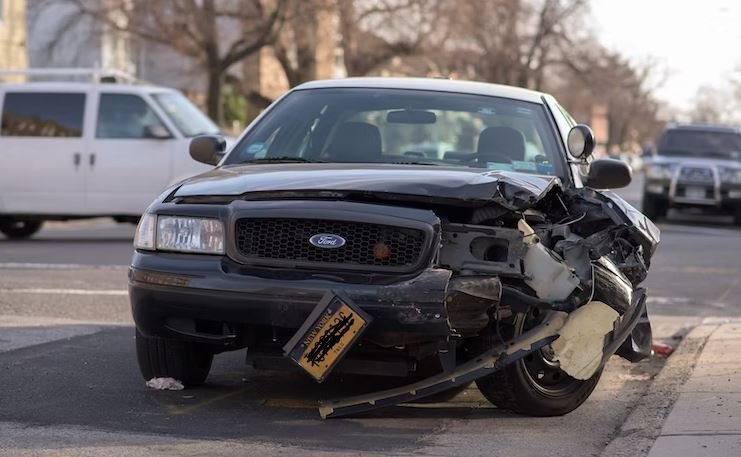
The aftermath of a car accident can be overwhelming, leaving you shaken and unsure of what to do next. While the physical damage to your vehicle might be evident, internal injuries can often go unnoticed. Understanding the most common car accident injuries can help you recognize potential issues and seek timely medical attention. This content is provided by Cash for Cars Werribee Service.
Head and Neck:
- Traumatic Brain Injury (TBI): This ranges from mild concussions to severe damage, causing headaches, dizziness, memory loss, and even coma.
- Whiplash: The sudden jerking of the head during a collision can strain neck muscles and ligaments, leading to pain, stiffness, and limited mobility.
Back and Spine:
- Spinal Cord Injuries: These can be life-altering, causing paralysis and loss of sensation depending on the severity and location of the injury.
- Back Strain and Sprains: These soft tissue injuries can cause pain, muscle spasms, and difficulty moving.
Chest and Abdomen:
- Rib Fractures: Broken ribs can cause severe pain with breathing and coughing.
- Internal Bleeding: This can be life-threatening if not treated promptly, and symptoms might not be immediately apparent.
Limbs:
- Fractures: Broken bones in arms, legs, hands, and feet are common, causing pain, swelling, and limited mobility.
- Sprains and Strains: These soft tissue injuries in the limbs can be painful and hinder movement.
Other Injuries:
- Lacerations and Cuts: These can occur from broken glass, debris, or airbag deployment.
- Burns: Contact with hot engine components or seatbelts can cause burns.
- Psychological Trauma: Car accidents can lead to anxiety, depression, and post-traumatic stress disorder (PTSD).
Severity and Factors:
It’s important to understand that the severity of these injuries can vary greatly depending on several factors, including:
- Force of impact: Higher speeds and collisions with heavier vehicles generally lead to more severe injuries.
- Occupancy and restraint use: Seatbelts and airbags significantly reduce the risk of injury.
- Individual health: Age, pre-existing medical conditions, and overall health can influence injury severity and recovery.
Seeking Help:
Even if you feel fine initially, it’s crucial to seek medical attention after a car accident. Some injuries might not present immediate symptoms, and early diagnosis and treatment can significantly improve your recovery and long-term prognosis. Don’t hesitate to visit a doctor or emergency room if you experience any pain, discomfort, or unusual symptoms following an accident.
Remember:
While this list provides an overview of common car accident injuries, it’s not exhaustive. Every accident is unique, and seeking professional medical advice is essential for accurate diagnosis and appropriate treatment. By understanding the potential risks and prioritizing your health, you can navigate the aftermath of a car accident with greater awareness and confidence.
Additional Tips:
- Keep a detailed record of your accident, including date, time, location, and any injuries sustained.
- Contact your insurance company promptly to initiate the claims process.
- Seek legal advice if necessary, especially for serious injuries or complex situations.
- Prioritize your well-being, both physically and mentally. Allow yourself time to heal and seek support from loved ones or mental health professionals if needed.
By staying informed and taking proactive steps, you can empower yourself to manage the challenges of a car accident and emerge stronger on the other side.
visit: https://www.bestcashforcarz.com.au/cash-for-cars-st-albans/
FAQ’s
1. What are the most common injuries sustained in car accidents?
- The most common injuries include whiplash, fractures, concussions, soft tissue injuries, and internal organ damage.
2. How soon after a car accident should I seek medical attention, even if I don’t feel injured?
- It’s advisable to seek medical attention immediately after a car accident, even if you don’t feel injured, as some injuries may not be immediately apparent.
3. What is whiplash, and how does it occur in car accidents?
- Whiplash is a neck injury caused by a sudden jerking motion of the head. It commonly occurs in rear-end collisions when the head is abruptly thrown forward and then backward.
4. What are the symptoms of whiplash?
- Symptoms of whiplash may include neck pain, stiffness, headaches, dizziness, and shoulder or back pain.
5. How is whiplash diagnosed and treated?
- Whiplash is diagnosed through a physical examination, medical history review, and sometimes imaging tests like X-rays or MRI scans. Treatment may include rest, physical therapy, pain medication, and in severe cases, surgery.
6. What are the potential long-term effects of untreated whiplash?
- Untreated whiplash can lead to chronic neck pain, reduced range of motion, headaches, and even cognitive and psychological symptoms like memory problems and depression.
Read More: Home



